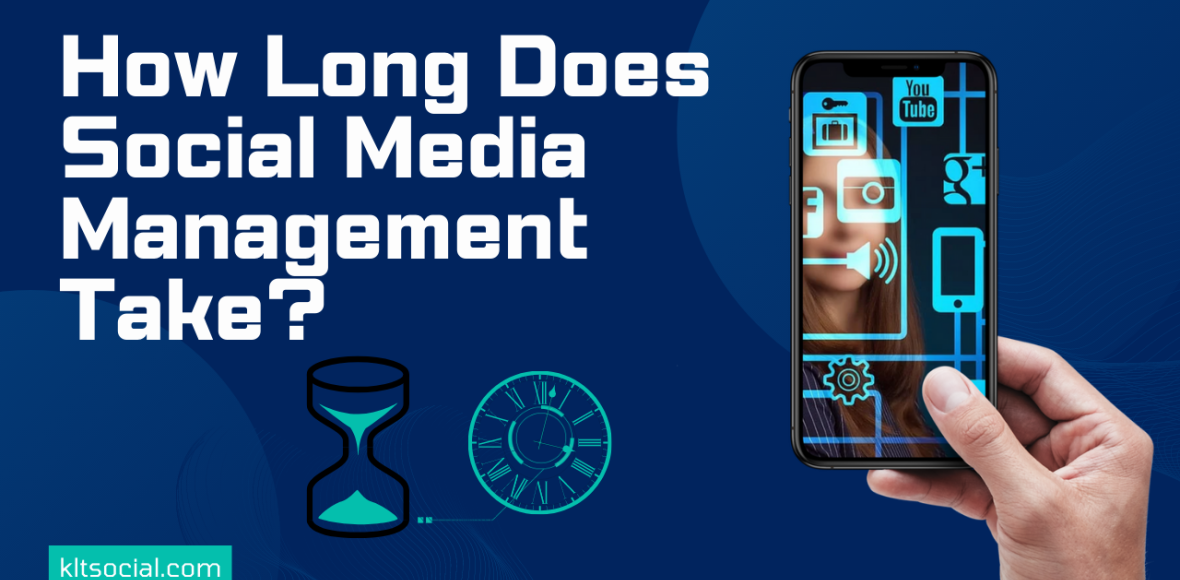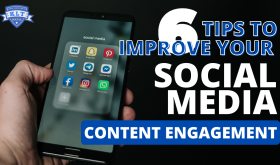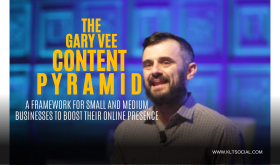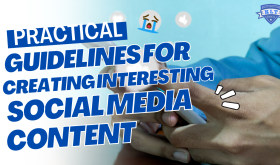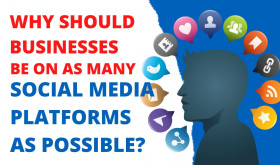Since the beginning of social media, some has claimed that social media management can be completed in 30 minutes or less every day. If you want to be successful, the reality is far different, and promises to the contrary—even if they are really helpful, do a disservice to people and businesses both. They instill unrealistic expectations of achievement and the time required to achieve it.
Social media is a commitment, whichever analogy you use (garden, long-term romance, or something else). You must care for it, nourish it, and give it what you want to receive in return. There is no way around it. Period.
In 2022, social media users worldwide spent an average of 147 minutes per day on social media, up from 145 minutes the previous year.
Cultivating an Engaged Audience
You won’t increase your channels if you spend 18 minutes a day on social media, and if your competitors spend more time, you can lose clients to them. And while you might not be “forgotten,” I doubt you’ll be discovered by the 40 percent of digital shoppers [using] social media to study new brands and items.
Why is that?
Because cultivating an engaged audience and appearing in searches takes more time
The amount of time you’ll need depends on how many channels you have. If you solely use Instagram, the amount of time you spend will be less than if you manage Instagram, Twitter, and LinkedIn, for example. The size of your firm and how much communication you require have an impact on the time equation.
The truth is that social media may be time-consuming. It will eat up all of your time and leave you feeling as if you aren’t putting enough effort into it. Whether I was spending 5 hours a week assisting a startup customer or my team had the equivalent of two full-time individuals handling a full set of channels, I’ve always felt overwhelmed. There is always something more you can do.
So the first thing you need to do is accept it and realise that it’s okay.
Then you must decide how much time and resources you can devote to it, and create a realistic plan for:
- What you can accomplish with what you have
- Where you’ll focus your efforts
- How you’ll measure success (realistic KPIs for the time and resources you’re investing, aka what success looks like)
Once you’ve established how much time you can invest, set expectations with your stakeholders on what you can and can’t accomplish. A 90-minute-a-week investment will look different from a 10-hour-a-week investment than a 20-hour-a-week investment, and so on.
A More Practical Social Media Strategy
Most people and businesses manage several channels, but we’ll limit ourselves to two for the purposes of this article:
Twitter and LinkedIn.
A 5-hour-per-week approach for managing both is provided below. While this investment can move the needle (I did it for a startup client), it is a considerably slower process. If your firm is B2B, I don’t propose working fewer than 10 hours per week.
This strategy also assumes that someone else is developing content for you to distribute (white papers, blog posts, videos, eBooks, product sheets, customer tales, events, and so on) and that your one hour each day is dedicated completely to the topics listed below. And, if I’m being completely honest, I don’t account for communication with your content producers and stakeholders, which can take up a significant amount of time. Make sure to account for this in your plans.
If you have more than two channels, you must add time to the equation.
5 minutes to check your content calendar
It’s usually a good idea to check your content calendar each day, to make sure everything is in order. Check the visuals and run a last verification to make sure there are no mistakes. Although you can modify a LinkedIn post after it has been published, Twitter does not provide an edit button. So you have the option of leaving the misspelling up or deleting and reposting.
Examining your scheduled postings is also a good idea to ensure that they don’t conflict with any important events that were not occurring at the time you scheduled them.
20 minutes* for writing and scheduling posts
Using a program to schedule posts is simple, but it takes longer than 1 minute. Plan on spending 30 seconds per post (assuming you’re simply copying and pasting from another source and have no problems). It will take you 2–3.5 minutes to publish 3–5 original tweets and 1–2 LinkedIn posts per day.
That leaves you with about 17 minutes every day to organise your editorial schedule AND CRAFT the posts you see in it. That isn’t a lot of time, believe me.
- Check your content sources on a daily basis, including third-party media and your company blog, as well as your marketing calendar and other new resources like eBooks, white papers, and case studies.
- Write the copy for the tweets and LinkedIn posts—it takes time to write brief, clever/interesting posts that engage readers.
- Create or locate related graphics—whether you make your own with a tool like Canva, use stock photography sites like Dreamstime, or even use the built-in image libraries, finding the correct visual (easily a few minutes) takes time.
And that’s simply on a daily basis. It excludes the creation of social media campaigns for special occasions such as events and product launches.
*Note: You might spend 29 minutes (or more) on this section and 20 minutes (or less) on listening and interaction. It all depends on the day and the situation. With just an hour a day, you’re probably writing, listening, and engaged at the same time.
29 minutes of social listening and engagement
Because social listening and engagement are two sides of the same coin, I’ve grouped them together.
Monitoring social media channels for mentions of your brand, products, and rivals, as well as keywords related to your sector, is known as social listening. If your organisation is in the customer service industry, your dashboard can look like this:
- Twitter mentions, retweets, and direct mentions have their own columns.
- A couple of Twitter lists (priority peeps, competitors)
- #CCTR, #CX, #CustomerExperience, #CustomerService) 3–4 hashtag searches
And participation is responding to and participating in the discussions you hear while listening. The more you engage with other people’s sandboxes (i.e. play in their sandboxes), the more they will engage with you. Additionally, replying to mentions and inquiries demonstrates to your audience that you care and are paying attention.
If you’re lucky enough to have active channels, just looking at the mentions for two channels will take more than 5 minutes. But let’s suppose you don’t, and you’re just checking out your Hootsuite Twitter lists and hashtag searches.
Perusing 6 columns of activity takes some time, especially if the individuals and hashtags you follow are active. Apart from taking notes on what you observe for further analysis and planning, as Hootsuite suggests, you should also be like and retweeting (ideally with comment).
I have a few example hashtags in the dashboard below that I caught on Friday afternoon (a generally slower time), and even then, there are numerous posts per minute. So, in a 24-hour period, there’s a lot to scan.
You should read something before like or retweeting it. If it’s just a quote, that’s simple, but if the tweet links to an article, for example, you should review the piece before connecting with it to ensure it corresponds with your company’s positioning and doesn’t mention any competitors. When you retweet, offer value by sharing your ideas via a retweet with comment. It takes time to add value.
5 minutes to analyse and plan
Sentiment, feedback, trends, purchase intent, and updates are all on the social media manager list of things to look at. I left it at 5 minutes because it’s an excellent list. However, we only have one hour per day to work with, and the duties listed above are more vital.
Please don’t misunderstand me. This is a critical stage. It aids in the comprehension of your target audience, their preferences, and their thoughts. It’s also crucial for enhancing your social media efforts. However, listening, interacting, and communicating with your audience must be your top priorities.
Then you must evaluate the outcomes of those activities as well as what you’re hearing. You can’t cut any more time out of those areas and expect to succeed.
Daily reporting: 4 minutes (1.5 hour a month)
“Isn’t reporting the same as analysing?” you might wonder.
” They’re related, which is why I’ve put them next to each other, but they’re not the same.
Reporting is the process of sharing your findings with others. It also contains all of the social media indicators you’re keeping track of, such as:
- Impressions and reach
- Followers
- Shares, likes, comments, and clicks are all examples of engagements.
- Best-performing articles
A little analysis is also given here. In addition to providing your stats, you should investigate and disclose why your top posts performed better.
Final Thoughts
The aforementioned figures are merely estimations. You’ll devote more time to writing and scheduling on certain days, and more time to listening and engaging on others. And there may be times when you’ll have to abandon all thoughts of analysis and planning in order to support a particular event for which an hour a day is simply insufficient. So, instead of using this timeline as a cookie cutter into which you squeeze your activities, use it as a guide for how to approach your day.
Remember to set expectations with your stakeholders about what you can and can’t do within that period once you’ve determined how much time you can commit to social media. You/they must invest more if you/they want more.
Visit KLT Social to help you manage your social media.

